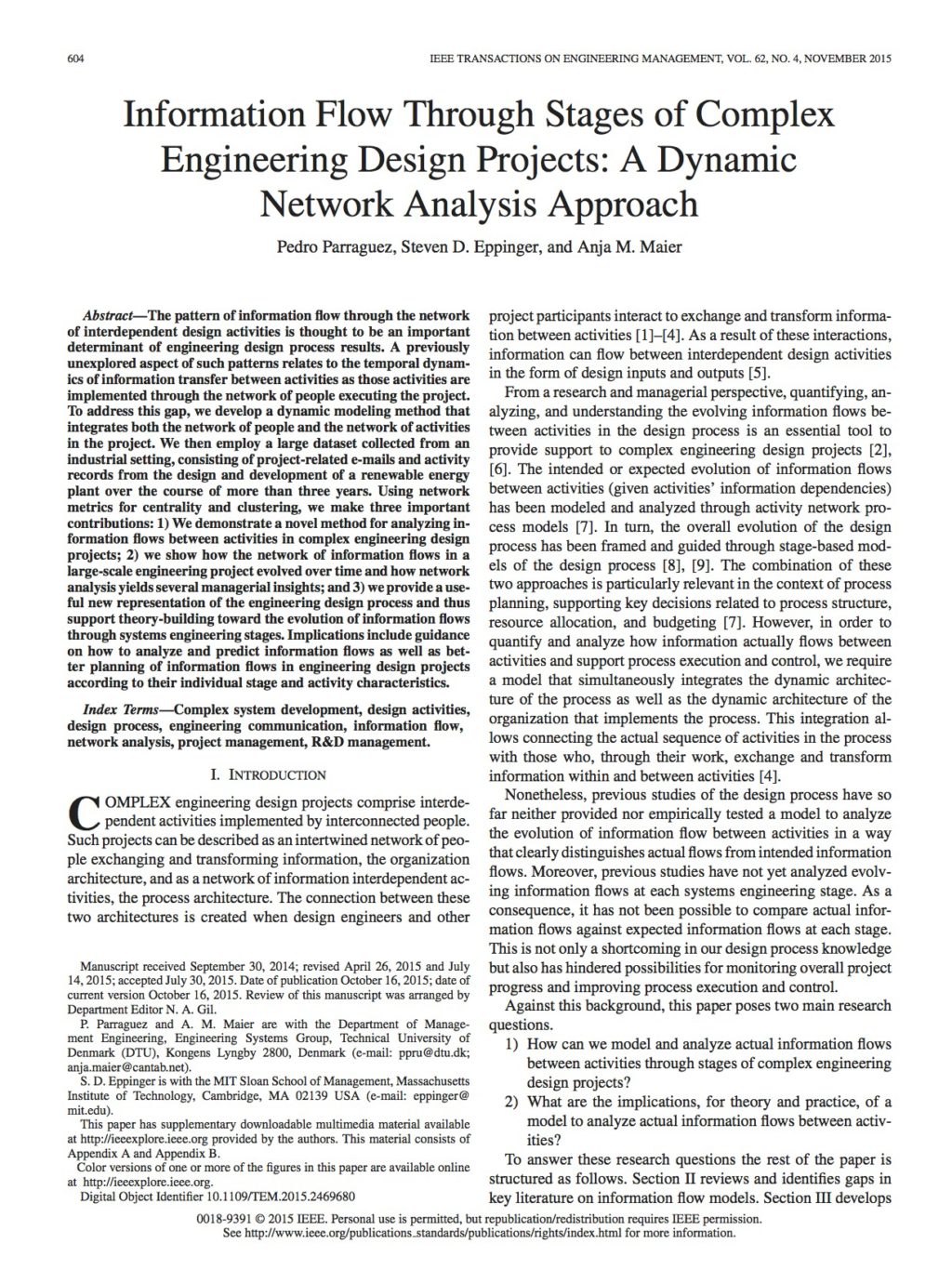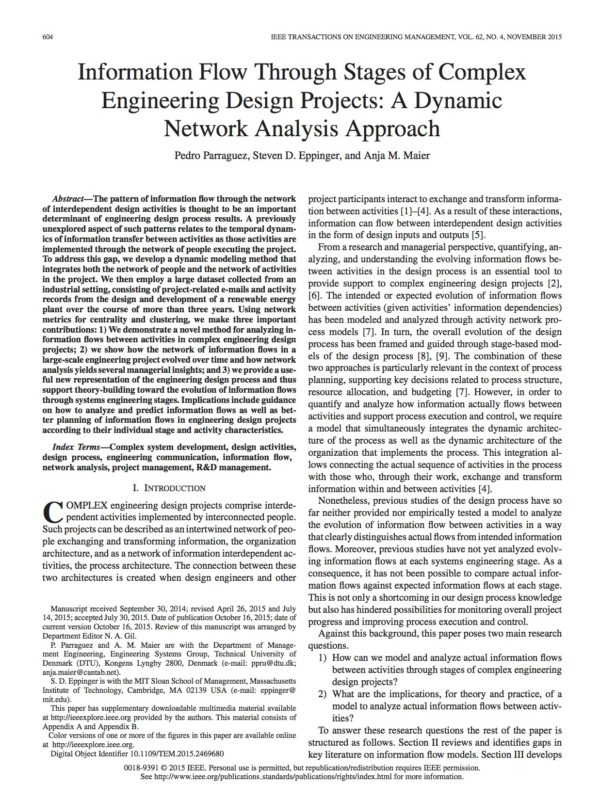Information Flow Through Stages of Complex Engineering Design Projects: A Dynamic Network Analysis Approach

KEYWORDS/INDEX TERMS: Complex System Development, Design Activities, Design Process, Engineering Communication, Information Flow, Network Analysis, Project Management, R&D Management
ABSTRACT: The pattern of information flow through the network of interdependent design activities is thought to be an important determinant of engineering design process results. A previously unexplored aspect of such patterns relates to the temporal dynamics of information transfer between activities as those activities are implemented through the network of people executing the project. To address this gap, we develop a dynamic modelling method that integrates both the network of people and the network of activities in the project. We then employ a large dataset collected from an industrial setting, consisting of project-related e-mails and activity records from the design and development of a renewable energy plant over the course of more than three years. Using network metrics for centrality and clustering, we make three important contributions: 1. We demonstrate a novel method for analysing information flows between activities in complex engineering design projects. 2. We show how the network of information flows in a large-scale engineering project evolved over time and how network analysis yields several managerial insights. 3. We provide a useful new representation of the engineering design process and thus support theory-building towards the evolution of information flows through systems engineering stages. Implications include guidance on how to analyse and predict information flows as well as better planning of information flows in engineering design projects according to their individual stage and activity characteristics.

 Parraguez, P., Eppinger, S.D. & Maier, A.M., 2015. Information Flow Through Stages of Complex Engineering Design Projects: A Dynamic Network Analysis Approach. IEEE Transactions on Engineering Management, 62(4), pp.604–617.
Parraguez, P., Eppinger, S.D. & Maier, A.M., 2015. Information Flow Through Stages of Complex Engineering Design Projects: A Dynamic Network Analysis Approach. IEEE Transactions on Engineering Management, 62(4), pp.604–617.